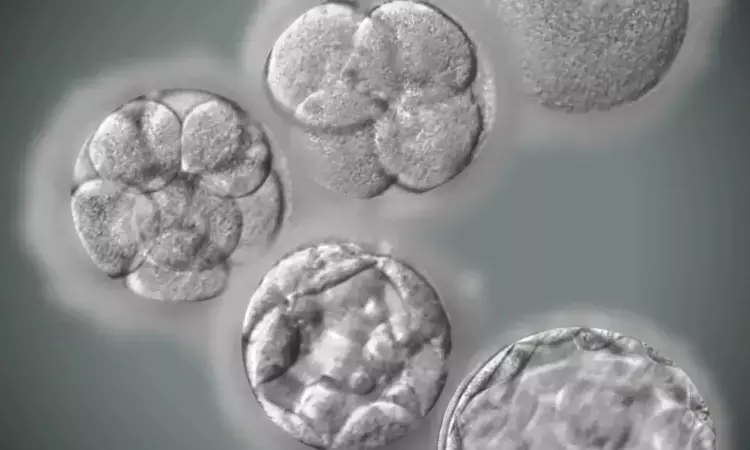- Home
- Medical news & Guidelines
- Anesthesiology
- Cardiology and CTVS
- Critical Care
- Dentistry
- Dermatology
- Diabetes and Endocrinology
- ENT
- Gastroenterology
- Medicine
- Nephrology
- Neurology
- Obstretics-Gynaecology
- Oncology
- Ophthalmology
- Orthopaedics
- Pediatrics-Neonatology
- Psychiatry
- Pulmonology
- Radiology
- Surgery
- Urology
- Laboratory Medicine
- Diet
- Nursing
- Paramedical
- Physiotherapy
- Health news
- Fact Check
- Bone Health Fact Check
- Brain Health Fact Check
- Cancer Related Fact Check
- Child Care Fact Check
- Dental and oral health fact check
- Diabetes and metabolic health fact check
- Diet and Nutrition Fact Check
- Eye and ENT Care Fact Check
- Fitness fact check
- Gut health fact check
- Heart health fact check
- Kidney health fact check
- Medical education fact check
- Men's health fact check
- Respiratory fact check
- Skin and hair care fact check
- Vaccine and Immunization fact check
- Women's health fact check
- AYUSH
- State News
- Andaman and Nicobar Islands
- Andhra Pradesh
- Arunachal Pradesh
- Assam
- Bihar
- Chandigarh
- Chattisgarh
- Dadra and Nagar Haveli
- Daman and Diu
- Delhi
- Goa
- Gujarat
- Haryana
- Himachal Pradesh
- Jammu & Kashmir
- Jharkhand
- Karnataka
- Kerala
- Ladakh
- Lakshadweep
- Madhya Pradesh
- Maharashtra
- Manipur
- Meghalaya
- Mizoram
- Nagaland
- Odisha
- Puducherry
- Punjab
- Rajasthan
- Sikkim
- Tamil Nadu
- Telangana
- Tripura
- Uttar Pradesh
- Uttrakhand
- West Bengal
- Medical Education
- Industry
Study finds direct correlation between number of eggs at retrieval and pregnancy rate among women above 40

In August 2010 the Quebec Government funded the costs of in vitro fertilization in exchange for greater use of single embryo transfer. As a result, stimulation protocols became gentler. S. Ouhilal et al sought to determine the optimal number of eggs at oocyte retrieval by carrying out a Cohort study.
Authors compared the number of eggs at oocyte retrieval and the clinical pregnancy rate in all our fresh stimulated cycles between August 2010 and December 2012. The number of eggs at retrieval were divided as follows: 1–4 eggs, 5 to 9 eggs, 10–14 eggs, 15–19 eggs, >20 eggs. Data was subdivided based on age less than 35, age 35-39, and age 40 and over.
A total of 1615 consecutive stimulated fresh IVF cycle starts that resulted in retrieval of at least one egg were analyzed. In women age less than 35 (n=590), the clinical pregnancy rate was optimal (≥44%) when there were at least 10 eggs at retrieval. For women with 1–4 eggs at retrieval it was 30.8% and for 5–9 eggs it was 36.2%. In women age 35–39 (n=543), optimal pregnancy rates (34.8%) were achieved with 5–9 eggs at retrieval. Less than 5 eggs significantly reduced the pregnancy rate (15.6%) whereas more than 10 eggs yielded pregnancy rates between 28 and 29%. In women over 40 (n=482), authors found a stepwise improvement in pregnancy rates with increased number of eggs at retrieval (1–4: 11%, 5–9: 21%, 10–14: 26%, 15–19: 33%).
In women 40 and over, there is a direct correlation between the number of eggs at retrieval and pregnancy rate whereas in women age less than 35 there was no improvement in pregnancy rates beyond 10 eggs. Interestingly, in women age 35 to 39, a modest number of eggs at retrieval (5–9) is associated with the best outcomes.
Source: S. Ouhilal, H. Lachgar, N. Mahutte. Montreal Fertility Centre, Montreal, QC, Canada; FertilitySterilty
MBBS, MD Obstetrics and Gynecology
Dr Nirali Kapoor has completed her MBBS from GMC Jamnagar and MD Obstetrics and Gynecology from AIIMS Rishikesh. She underwent training in trauma/emergency medicine non academic residency in AIIMS Delhi for an year after her MBBS. Post her MD, she has joined in a Multispeciality hospital in Amritsar. She is actively involved in cases concerning fetal medicine, infertility and minimal invasive procedures as well as research activities involved around the fields of interest.


